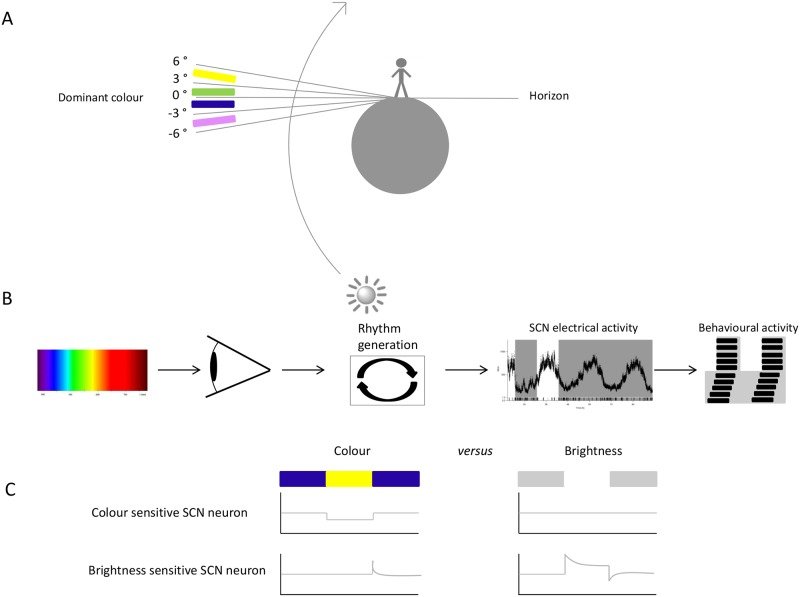Seeing Time: How Colors Affect Your Body Clock
Our bodies have a built-in clock that keeps us on a 24-hour schedule. It relies on our eyes to sense the natural light and dark cycles in our environment. These special cells in our eyes not only detect the brightness of light but also its color. Researchers found that our body's clock pays attention to the colors of light, not just how bright it is, to make sure our internal time matches the time outside. This helps us stay awake during the day and sleep at night. The following points help us understand why Color and Light Wavelenths help us regulate our ‘body clock’.
1. Our Eyes and Light: Our eyes have different types of cells that sense light. We've got rods and cones in the outer part of our eye that help us see things, like colors and shapes. Inside the eye, there are some special cells called photosensitive retinal ganglion cells (pRGCs), and these use a pigment called melanopsin to sense light.
2. Light's Job: Light does two important jobs for us: it helps us see things visually (like the colors of a sunset), and it helps our body keep track of time. This internal clock is called the circadian clock, and it helps us know when it's time to be awake and when it's time to sleep.
3. Not Just One Job for Light: For a long time, people thought that melanopsin was the main player in telling our body's clock what time it is. But recent research is showing that other parts of our eyes also play a role. It's not just about how bright the light is; it's also about the colors or wavelengths of light.
4. Different Photoreceptors, Different Jobs: Our eyes have different photoreceptors, each sensitive to certain colors of light. Rods like green light (around 498 nm), melanopsin prefers blue light (around 480 nm), and cones come in two types, with one liking UV light and the other green light (around 360 nm and 508 nm respectively). This means that our body's clock can tell time not just by how bright the light is, but also by what colors it sees.
5. A Role for Color: The study by Walmsley and his team looked at how the colors of light change during sunrise and sunset. They found that as the sun moves below the horizon, we see more short-wavelength (blue and UV) light. This color change in the light might help our body's clock predict when the sun will rise or set, which is important for keeping our daily rhythm in sync.
In simpler terms, our eyes have different cells that can sense light and colors. Light does more than just help us see; it also helps our body keep track of time. While we thought one type of cell in our eyes was responsible for this, new research shows that different cells in our eyes, which like different colors of light, work together to help our body's clock. The colors of light in the sky at sunrise and sunset might be like a clue for our internal clock, helping it know when it's morning or evening.
Image credit: Hester van Diepen.
